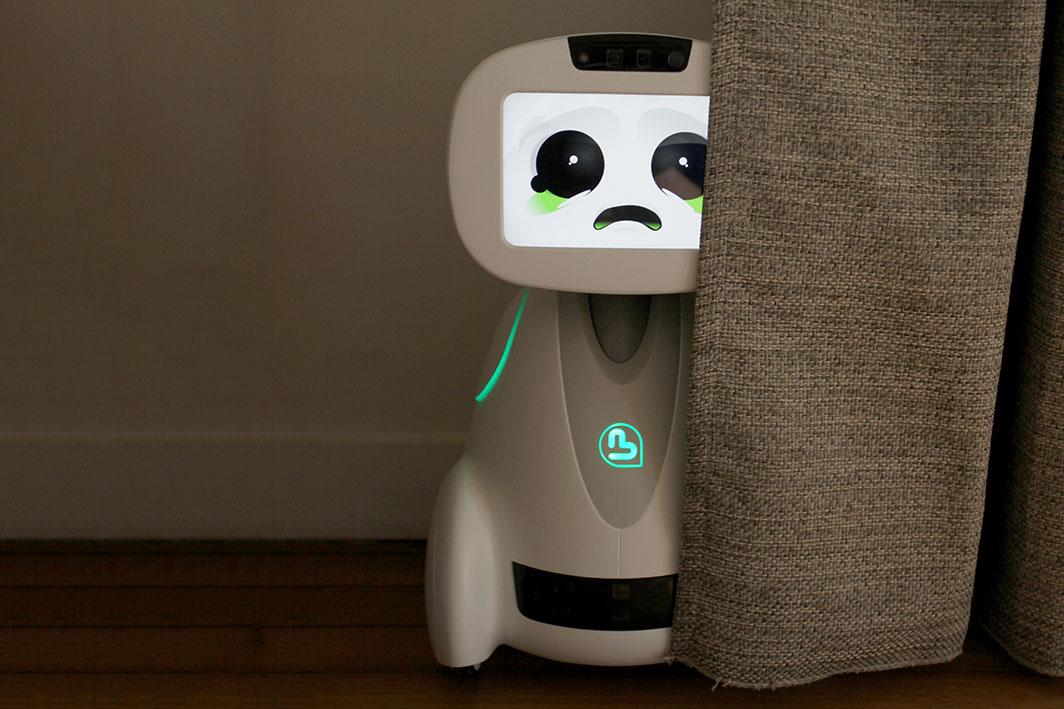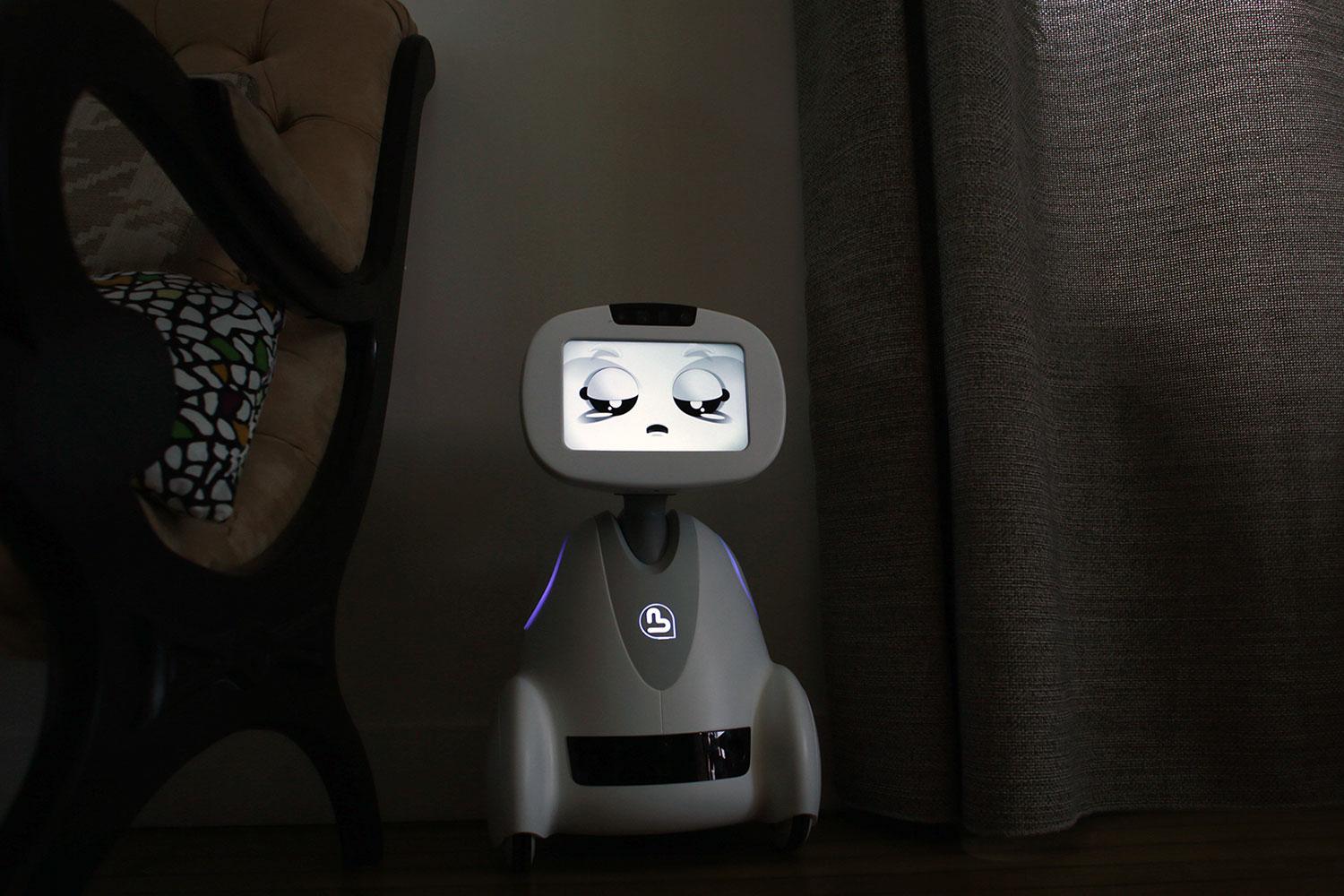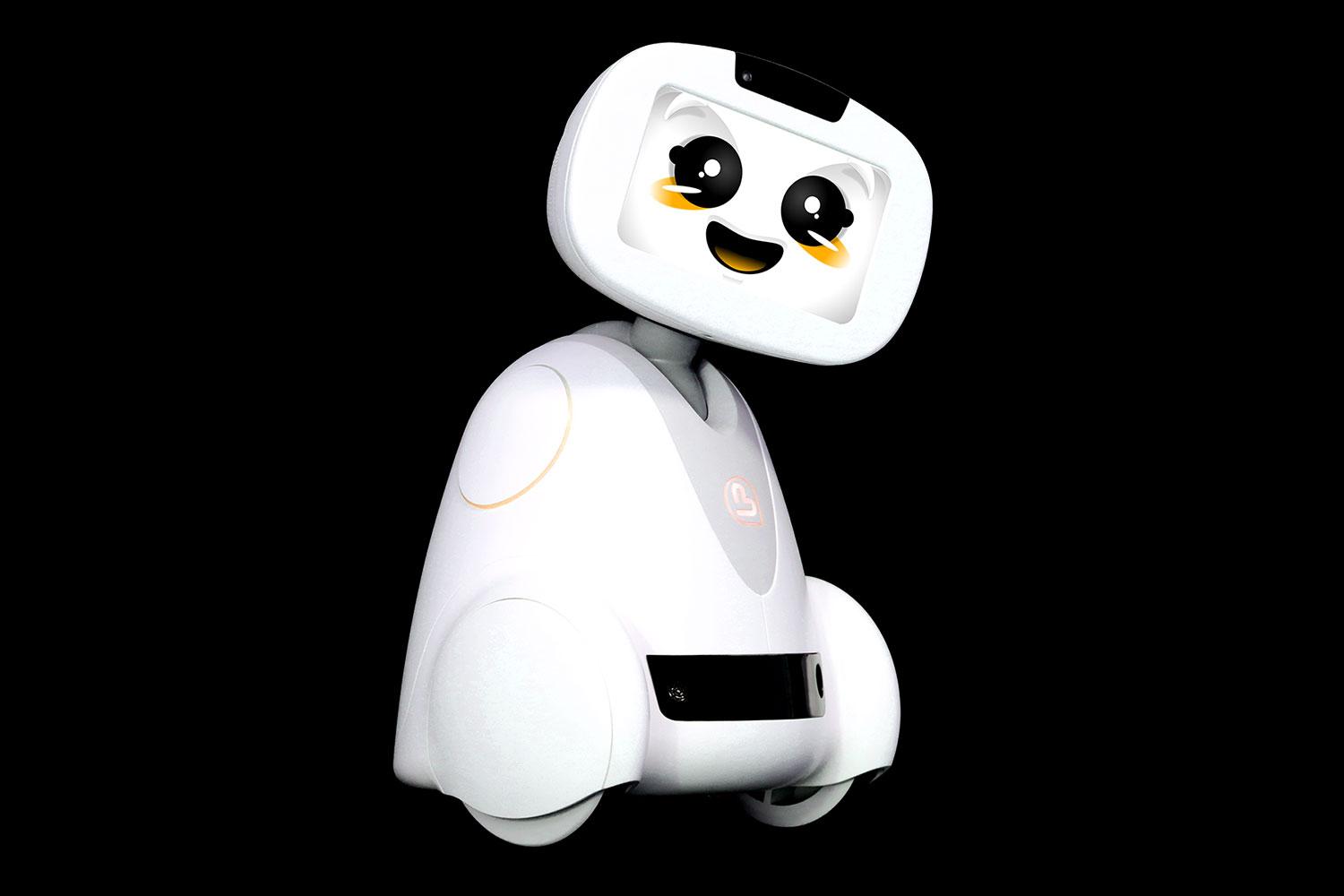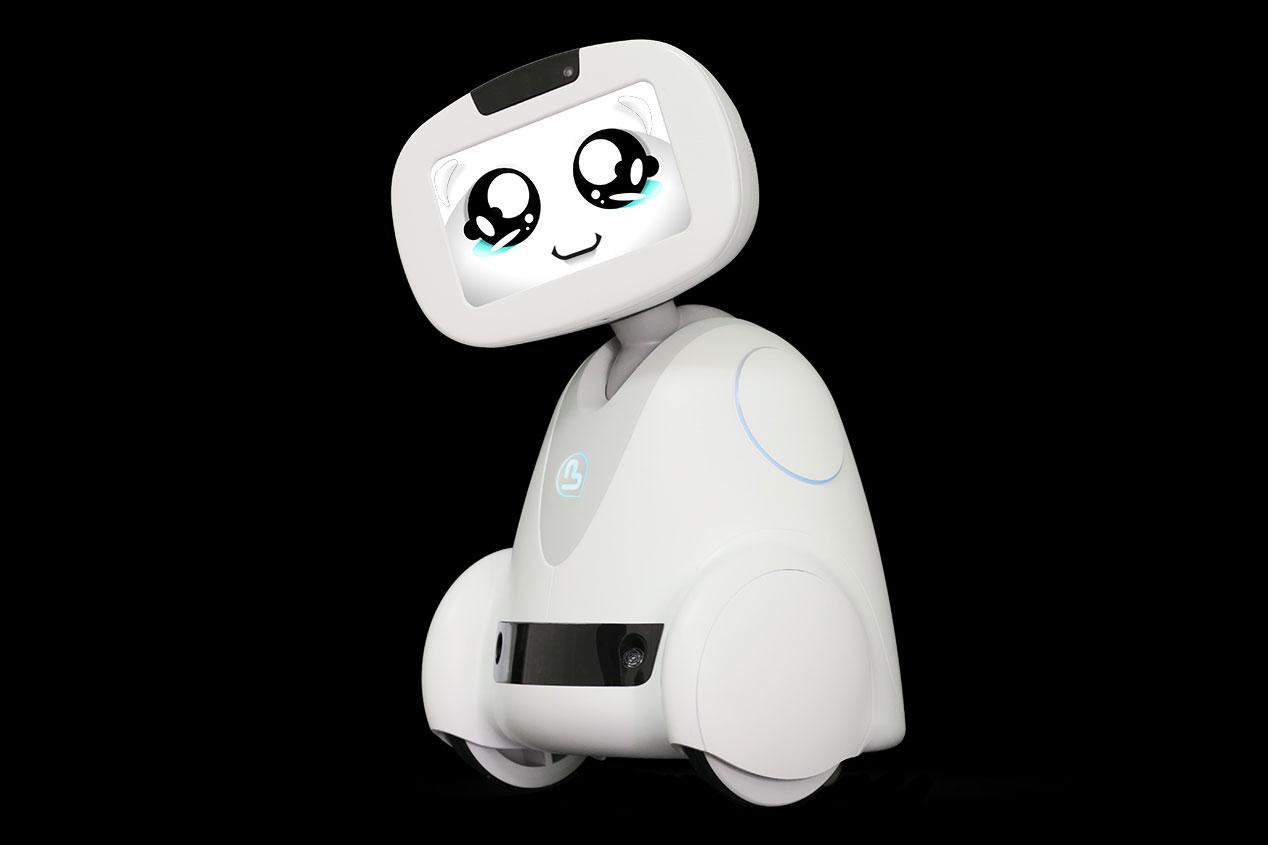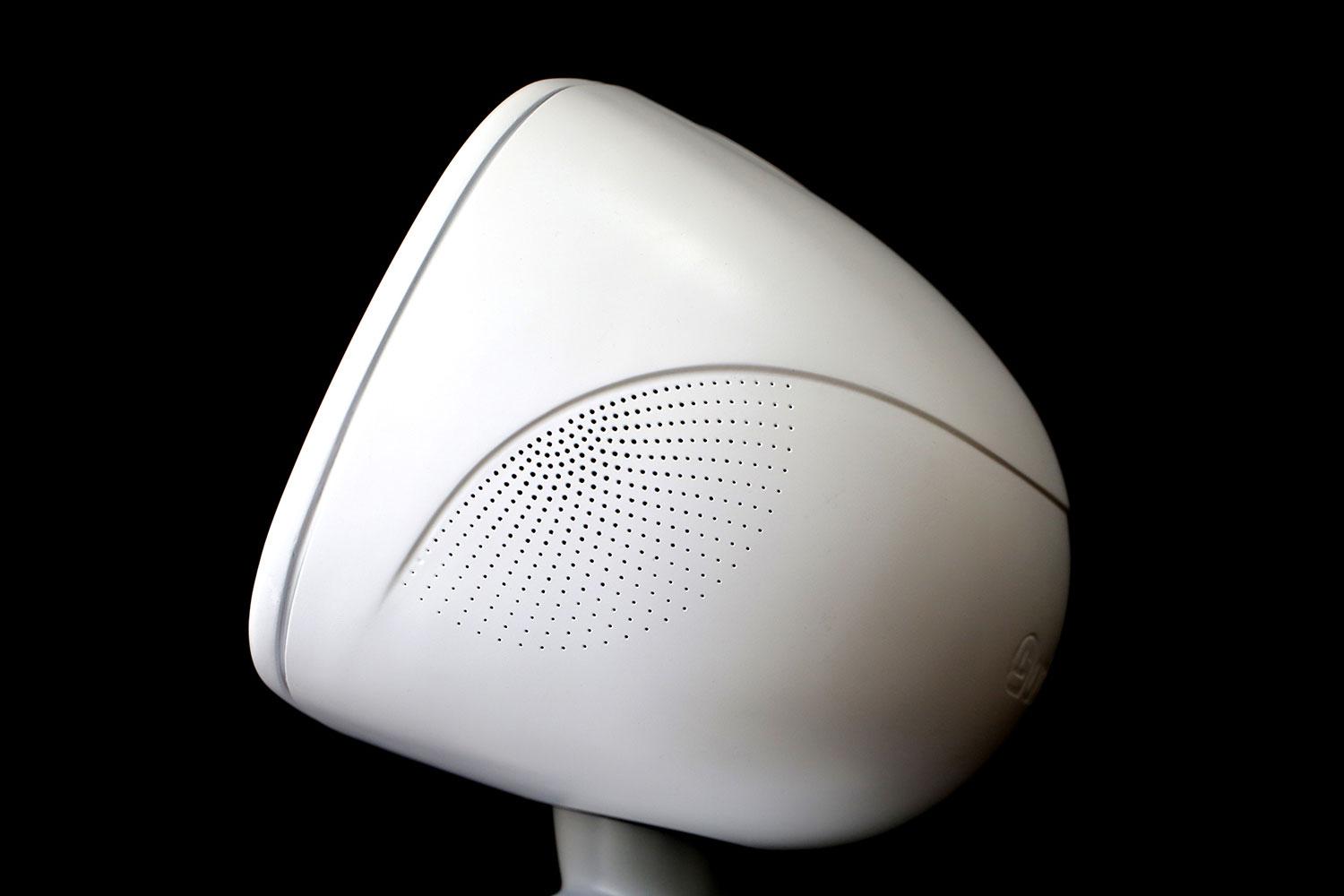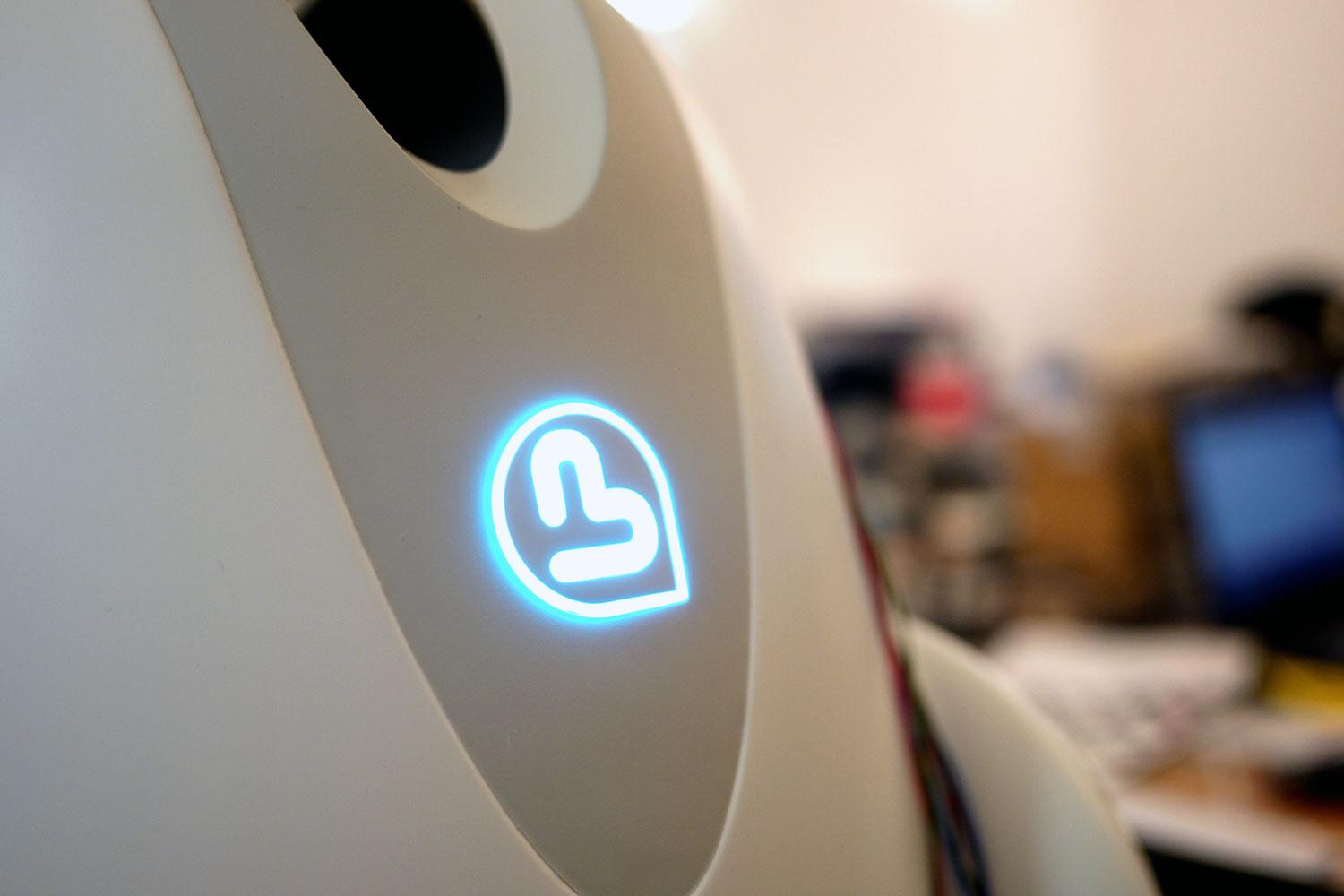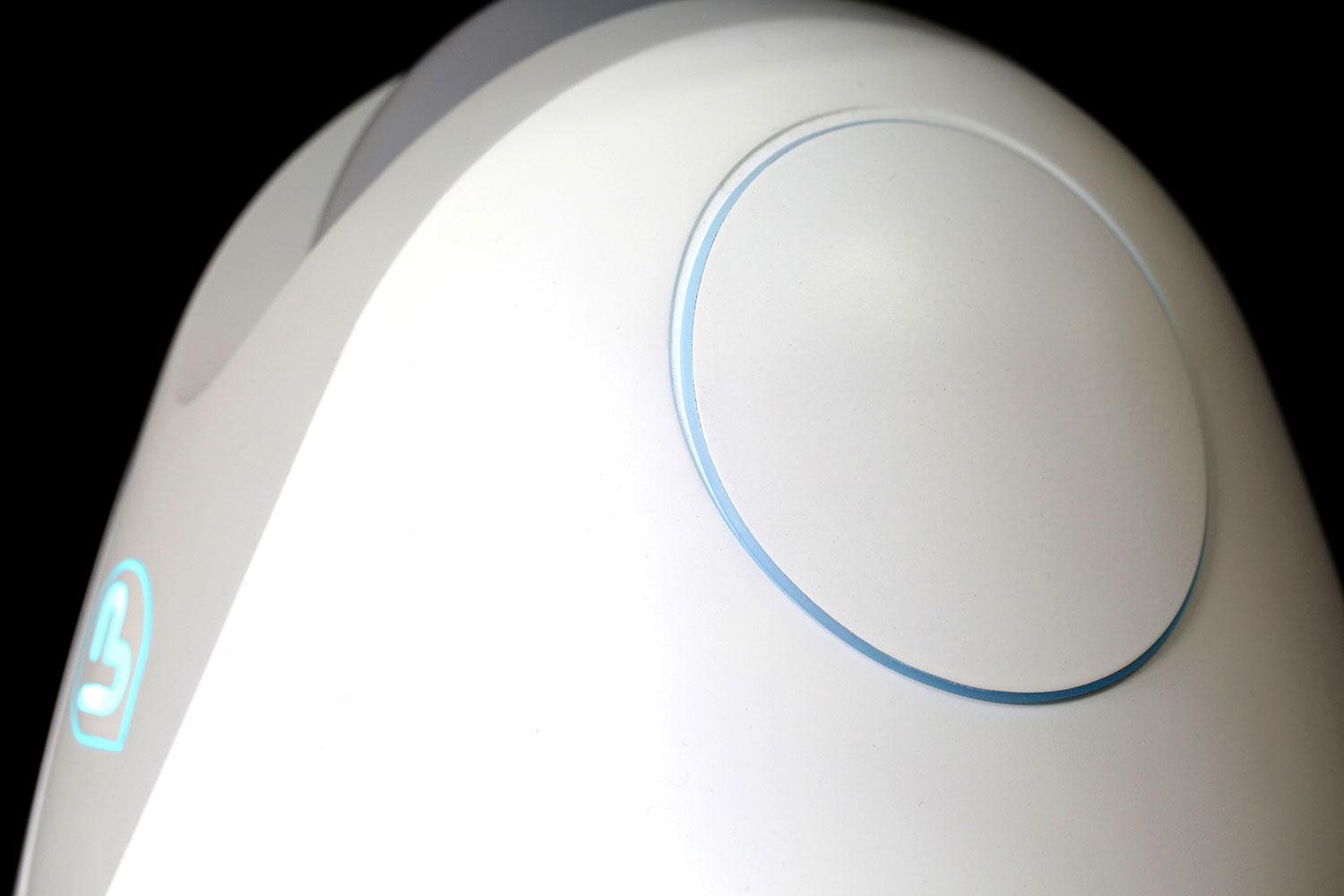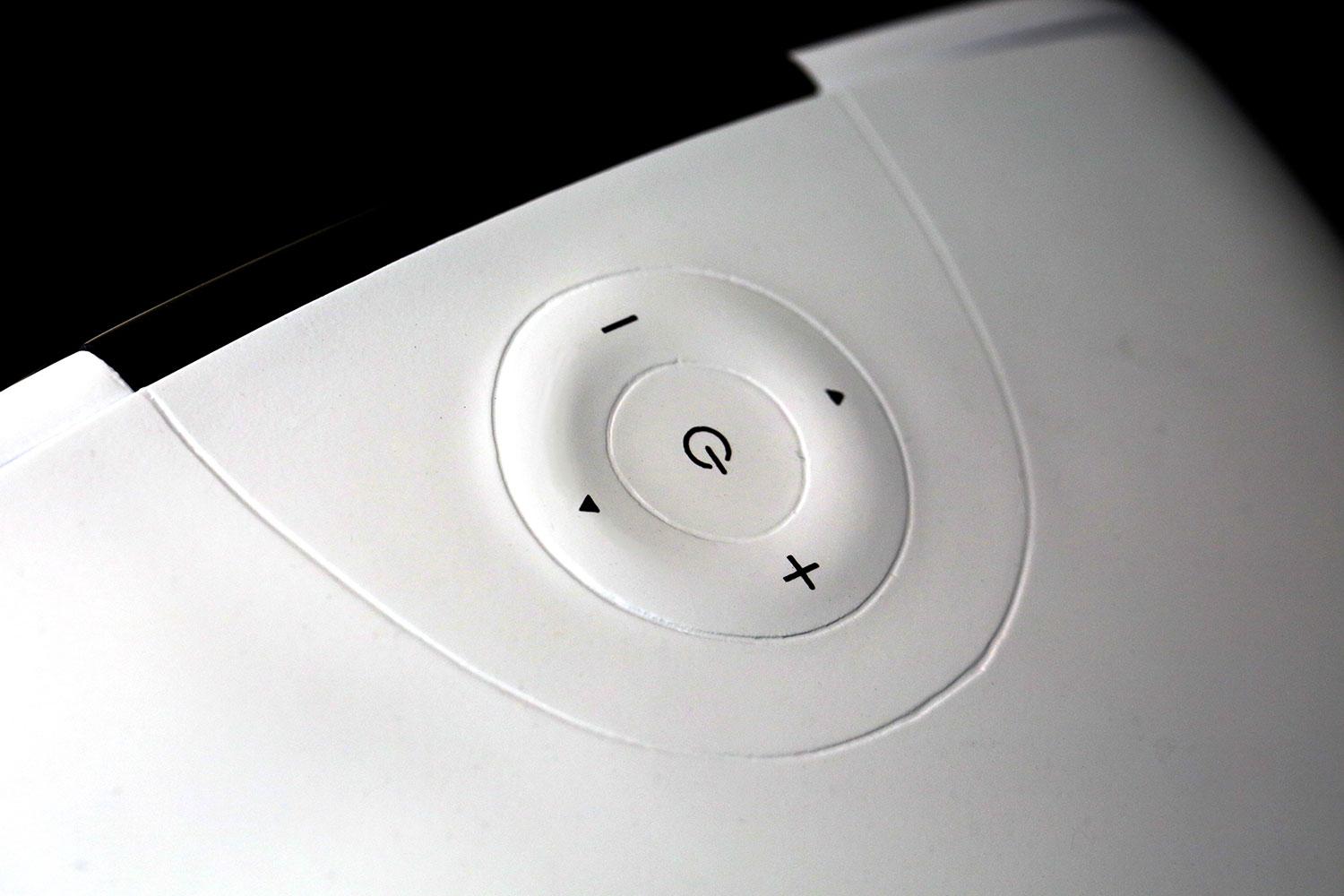I’ll admit it, I want a robot. So when I was given the chance to meet Buddy, a house robot that I can actually buy, the meeting was confirmed before you could say “protocol droid.” I doubt there’s a sci-fi geek out there who doesn’t want their own R2-D2 (or C-3PO, Robby, Maria, or even an Isla) in their house, making visitors feel like they’ve stepped through a door into the future.
He’s made to respond to your voice, and really, that’s what I want — my own ‘bot I could banter with all day long.
The door through which I entered to get my one-on-one time with Buddy was rather ordinary, and didn’t swoosh to one side as would have been appropriate. How very 2015. Buddy, I hoped, would make me feel more like it was 2115. There he was, sat on a table, staring up at me with cute anime-sized eyes.
He’s more R2-D2 than C-3PO. He’s got no arms, three wheels, and a tablet for a face. Standing a couple of feet high, he wasn’t quite the futuristic marvel I’d wished for, but I liked the cool blue glowing lines on his body. What I really wanted to do was talk to Buddy. He’s made to respond to your voice, and really, that’s what I want — my own ‘bot I could banter with all day long.
“How old are you, Buddy?” I bellowed for the fifth time, like a trainee cop who’d run out of questions while interrogating a suspect. He didn’t answer, and refused to answer his owners, too. Bad robot. He had previously decided not to tell me his name, but had given a little dance when asked to, the little attention seeker. Eventually, I discovered he was a single year old. Getting that information out of him was harder than getting it from a petulant, five-year old human being.
Do robots get nervous?
Frustrated by this ignominious start, Buddy was sent out of the room to go and mingle with other people who’d come along to see him. He trundled around the floor, continually staring up at the faces looking down at him. He looked a little lost, but Buddy was busy monitoring faces and looking for one he recognized. Soon, he settled into his surroundings.
He chatted away about the Indiegogo campaign through which he can be purchased, told people what he could do, offered to tell some jokes, did another little dance, and giggled at what was going on. He was the life of the party, and even managed to upstage his creator’s introductory speech by flirting with some of the attendees. This was more like it! Now his tantrum had passed, I was warming to Buddy. Maybe he was just nervous before.
Buddy’s natural habitat will eventually be a regular home. He’d meet his owners, store their faces in his memory, and like a robotic vacuum cleaner, map out his new surroundings. His battery packs will last for about 10 hours, and he’ll even go off to his recharging station when he needs more power.
What’s Buddy’s primary directive?
Great, but a robot must have a purpose. Does Buddy actually do the vacuuming, or any housework at all? No. He’s a companion for you, your kids, or your aging parents. He has a camera, a microphone, and a speaker. He’ll keep a watch on your house when you’re out, and you can see what he sees using the phone app. All these features more or less turn him into a kind of roaming telepresence machine — you can even talk through him.
It’s impossible not to be impressed by a robot that actually assesses its environment and interacts with you and your family.
The camera has a thermal function, which can be used to detect fires, see people in the dark, or understand the difference between the shape of a person collapsed on the floor and say, a pile of towels ready for the wash. He’s also compatible with all your smart-home equipment, so he can look after your house and its operation. Buddy’s an open-source robot, and developers can write supporting apps for him, so his entire look and personality can be reworked, right down to his face, voice, and name.
Behind Buddy’s sweet little face is actually Google Android, complete with Google Now — the often creepily knowledgable contextual software. If Google Now knows, then Buddy knows, and because he’s basically an Android device on wheels — complete with speech recognition — he has the ability to use and act on that information to help you out.
Buddy’s got huge potential, and it’s impossible not to be impressed by a robot that actually assesses its environment, duly watches over your home, can interact with you and your family, and even lets you know if Uncle Joe has taken a spill and needs assistance. Well, provided he does so on the same floor as Buddy, because like the Daleks, he’ll be easily defeated by stairs.
Is he the robotic pal I’ve been looking for?
Did my robotic fantasies come true in that London office? Is Buddy everything I’ve been looking for in a cybernetic pal? Not really, primarily because he’s still a work in progress. Voice recognition is a pain, the software needs considerable polish before launch, and developers need to be romanced to make the most out of his open-source nature, and ensure he enters homes packed with features.
It’s debatable whether Buddy is useful enough at the moment to become a permanent member of the household. He’s undeniably exciting as a piece of technology, but unless he offers something unique outside of the novelty factor that truly helps me out in everyday life, Buddy could be little more than a slightly annoying trip hazard.
There’s time for all this to change. He’s still a year away from rolling into homes around the world, and apparently 150 developers already signed up to help propel Buddy to robot stardom. He’s also reasonably priced, at around the same cost as an unlocked Galaxy S6 smartphone. Of course, the S6 is similarly infused with Google Now knowledge, and will respond to your voice; but it doesn’t roll around the house, scare the cat, or make me feel at least a bit like Luke Skywalker.
Buddy hasn’t put me off house robots, he just reminds me that the ones I dream of are still science fiction.


